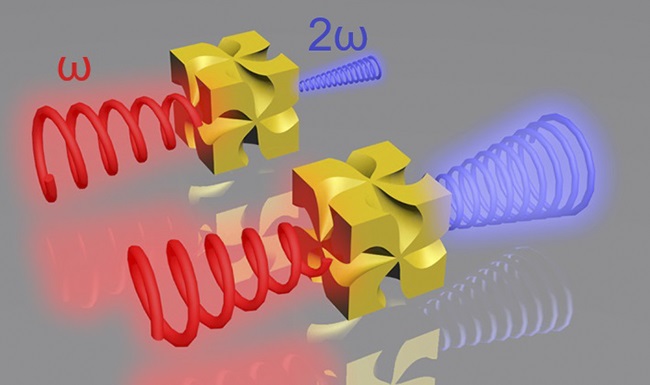The left hand looks like the right hand in the mirror but the left-handed glove does not fit on the right hand. Chirality refers to this property where the object cannot be superimposed on to the mirror image. This property in molecules is an important factor in pharmaceutical research as it can turn drugs toxic.
These molecules and mirror-symmetrical molecules have the same physical properties, and therefore cannot be distinguished using general optical analysis. Instead, polarized light – that spins in different directions – must be used. In addition, when the molecular size is small compared to the wavelength of light, it has a very weak chiral interaction between light and molecules, rendering it difficult to measure it.
A research team led by Professor Junsuk Rho and Jungho Moon (Department of Mechanical Engineering and Department of Chemical Engineering) at POSTECH in collaboration with Professor Ki Tae Nam and Dr. Hyeohn Kim (Department of Materials Science and Engineering) at Seoul National University and Professor Thomas Zentgraf (Department of Physics) at Paderborn University in Germany have together developed a technology to increase the chirality between light and nanoparticles using the metamaterial*1, known as the invisible cloak material.

SHG signals of chiral gold nanoparticles that differ significantly for the circular polarizations of the opposite helicity.
In general, a signal is generated when light is irradiated on chiral nanoparticles but its intensity is very weak. Therefore, several nanoparticles had to be collected to measure the average signal. To overcome this issue, the research team succeeded in synthesizing an artificial chiral material using metamaterials, significantly strengthening the signal.
The research team measured the chiral linear scattering and second harmonic generation (SHG) scattering of one newly developed chiral nanoparticle. SHG is a phenomenon in which light with twice the frequency (2ω) of the incident light (ω, omega) is generated. Most chiral nanoparticles emit a weak SHG signal, rending it difficult to measure it.
Read the original article on Pohang University of Science and Technology (POSTECH).
